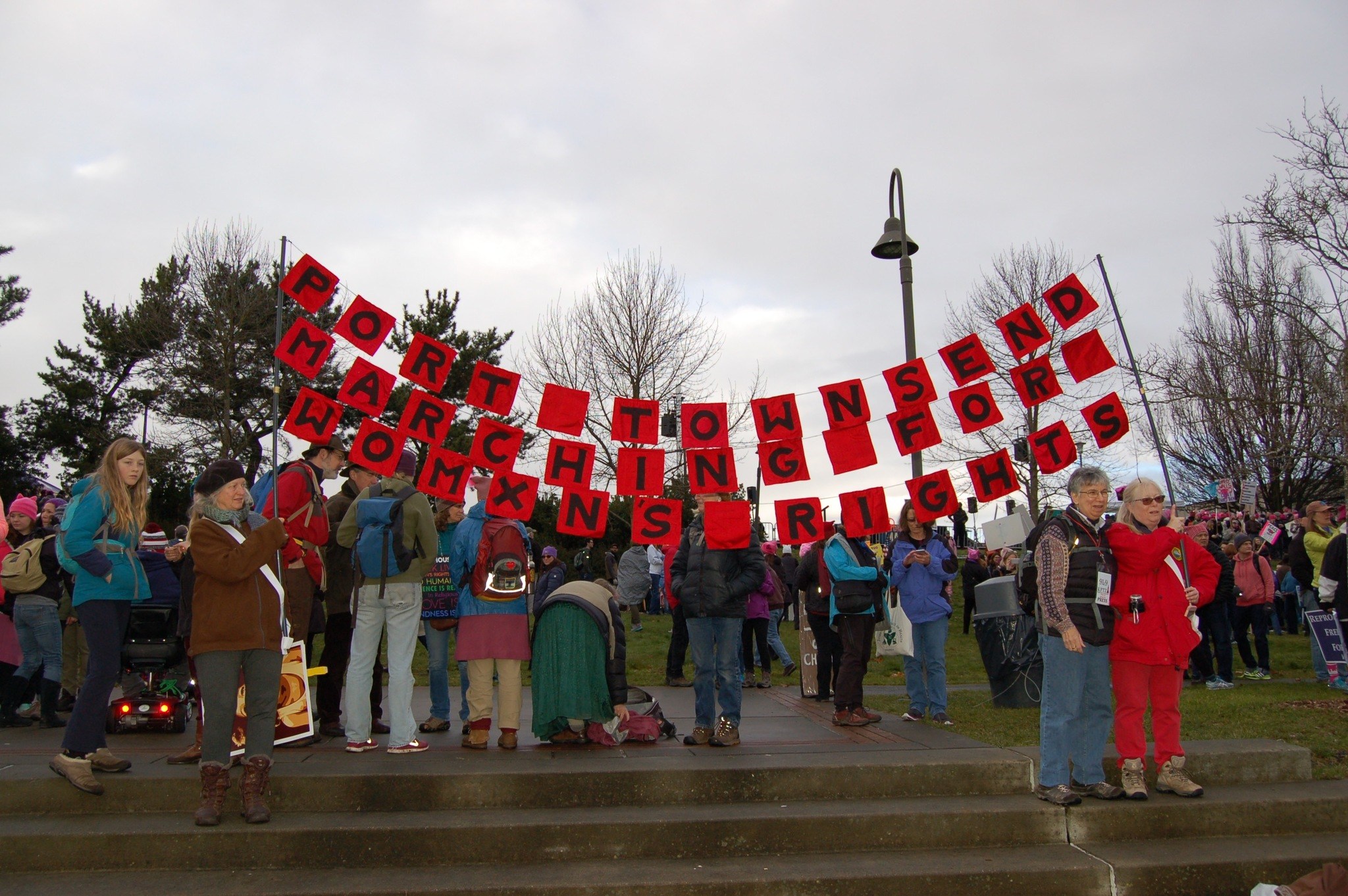“And still I rise!” echoed across Judkins Park in Seattle as hundreds of thousands of men and women chanted the mantra on the morning of the Seattle Womxn’s March.
The scene was a massive gathering of an estimated 200,000 people crammed together with banners, signs, flags, inflatable and painted props, balloons and pink hats ready to march the 3.7 miles from Judkins Park to Seattle Center.
More than 10 people from Sequim attended the Seattle Womxn’s March on Saturday, Jan., 21, to take a stand for women’s rights and a number of issues surrounding the new Donald Trump presidency.
Sequim locals Diann Roll, Ann Schade and Sue Cram traveled to the march with several hundred Port Townsend residents on buses and in carpools.
Schade said she was marching to support the women’s rights movement, education issues and the environment, while Roll felt strongly about marching for gender equality both in identity and orientation.
“I reserve the right to define myself in all ways,” Roll stated, adding she believes everyone should have the right to do the same.
“The nation deserves leaders that support equality for everybody,” she said.
Cram knitted pink hats for the march resembling that of a beanie with two distinctive ears folding over at the sides.
“I want the administration to remember our rights are guaranteed.”
The hats were clearly a symbol worn by thousands of women attending the march as pink heads could be seen far and wide.
Holly Hatton, a Sequim resident, attended the march with her daughter, cousin Myla Gloor-Nelson and her brother Joshua Gloor.
“I felt a need to stand up and say no to the kind of bullying and divisiveness coming from the new administration,” Hatton said.
She explained that she wanted to stand up in a peaceful and non-offensive way and felt the march was the right place to show her support.
As the marchers made their way through the streets of downtown Seattle, they were met with support from onlookers on the sidewalks and residents in apartment buildings. At one point, the crowd erupted in cheer as two bald eagles were spotted circling above the masses.
There were thousands of signs held by marchers all advocating different issues, such as environmental awareness, women’s rights, equality, healthcare, minority rights, disability rights and more.
Marchers sang a variety of chants as they walked the streets of Seattle, from “no rape culture!” to “love trumps hate!”
The only noted opposition that could be seen were three young men on the sidewalk carrying a large poster of an unborn fetus chanting against abortions.
Five hours later, the marchers reached their destination at Seattle Center. The march remained peaceful and organized with the streets blocked off to traffic by members of the Seattle Police Department.
After the march, Roll said she felt energized and encouraged as she marched with the group around her.
“It was one of the most amazing days of my life,” she said.
“Just to be a part of a large group with a common goal was really encouraging under the circumstances of the last few months.”
Cram wondered if this march would make a difference in the end, expressing that she hoped it would.
“I really enjoyed feeling part of a group with a positive message,” she said.
She reflected back to the 1960s when she said she saw police officers using fire hoses and police dogs on protesters during the civil rights movement and explained that this march was a much different feeling.
Schade said she felt that the march was a unifying experience.
“I thought it was so wonderful that so many people could come together,” she said.
Hatton explained that before the march she was battling with family members about her decision to attend, but in the end gained the sense of peace she needed.
“It helped me to know that I’m not alone in my concerns and that there are millions of people who are willing to stand up and take care of each other,” she said.


